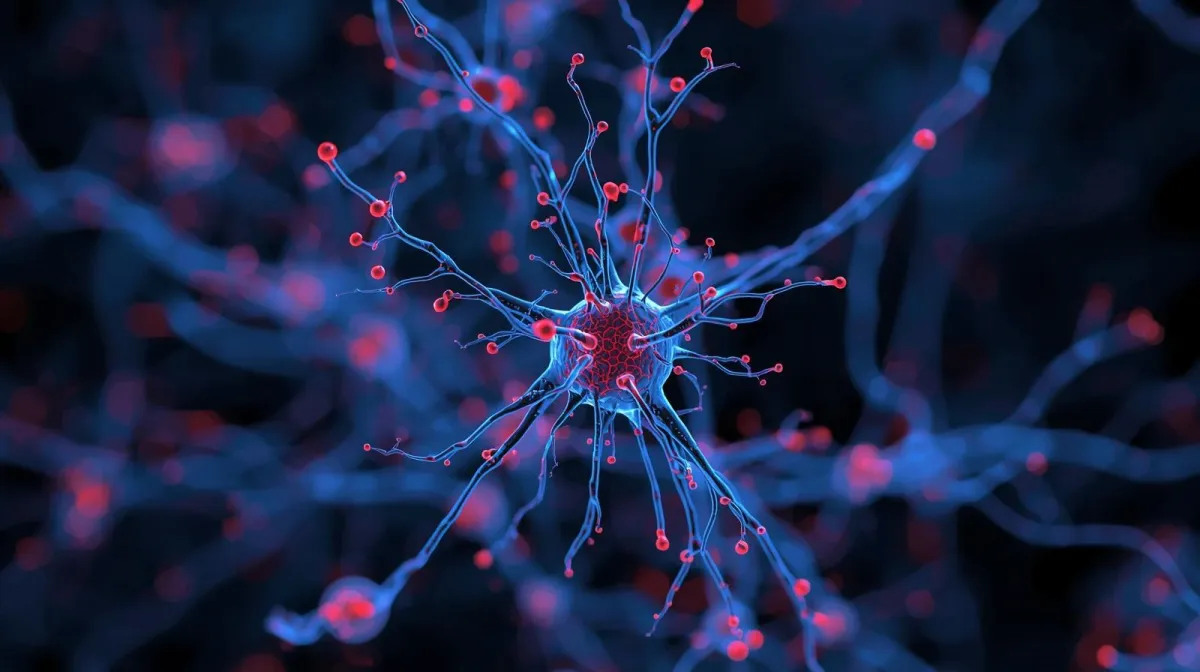
Stuck in "Fight-or-Flight"? How to Hack Your Nervous System During Menopause
One minute you’re fine, and the next your heart races because the grocery store line is moving too slow. You suddenly feel anxious for "no reason." You’re not "losing it"—your nervous system is simply running in overdrive.
During menopause, hormones like estrogen and progesterone—which are vital neurosteroids that help regulate your brain chemistry and nervous system—start to fluctuate. This shift destabilizes your body's stress-and-calm switches, often leading to a state of chronic biological hyper-reactivity.
The shifts you feel are not just hormonal; they are neurological. Understanding this difference is the key to finding peace.
Let’s decode the two powerful systems running the show:
The Sympathetic Nervous System (The Accelerator)
Think of this as your Go Mode—it's the system that activates your ancient fight, flight, or freeze response. It's designed to save you from immediate danger by increasing heart rate and diverting resources.
In menopause, research indicates that the decline in estrogen makes the brain's stress center (the amygdala) more sensitive, meaning this system fires faster and stronger. This is why small triggers suddenly feel huge.
The Accelerator is Engaged When:
You get a hot flash out of nowhere (a surge of sympathetic activity triggers the cooling mechanism).
Your heart races or you have sudden palpitations.
You feel waves of anxiety or irritability that seemingly come out of the blue.
This is a biological shift. You are not losing your mind; you are stuck in sympathetic dominance.
🌿 The Parasympathetic Nervous System (The Brake)
This is your Rest, Digest, and Restore Mode. It's the powerful part of your nervous system, primarily managed by the Vagus Nerve, that slows your heart rate, calms your mind, and helps your body repair itself.
When The Brake is Active, You Feel:
Grounded and clear.
Emotionally steady and resilient.
Able to sleep deeply and restore energy.
Menopause often tilts the balance toward sympathetic dominance—meaning the accelerator is floored more often than the brake is applied. Hacking your nervous system means restoring this balance.
Hack Your System: 5 Evidence-Based Shifts for Balance
You can’t control the hormone shift, but you can absolutely regulate your nervous system's response. Here are five powerful, research-backed shifts to engage your Parasympathetic Nervous System (The Brake):
1. Hack 1: Breathe to Change Your State
The Science: Slow, controlled breathing with a longer exhale is the fastest way to signal safety to your brain. This practice directly stimulates the Vagus Nerve and boosts Heart Rate Variability (HRV), which indicates your body's flexibility to adapt to stress.
The Action: Try the 4-4-6 pattern (Inhale for 4, Hold for 4, Exhale for 6). This effectively slows your breath rate to the scientifically calming zone of about 6 breaths per minute. Longer exhales literally tell your body, “We’re safe.”
2. Hack 2: Anchor Your Senses (Grounding)
The Science: When the nervous system is overwhelmed, the mind spirals in worry (past/future). Pulling your attention to the five senses interrupts the stress loop and signals to your amygdala that the immediate environment is safe.
The Action: When your heart races, use the 5-4-3-2-1 practice: Name 5 things you can see, 4 things you can feel (touch), 3 things you can hear, 2 things you can smell, and 1 thing you can taste. This is an immediate, powerful neurological reset.
3. Hack 3: Protect Your Energy (Boundaries)
The Science: External stress (from work, relationships, or social obligations) has the same physiological effect as hormonal stress—it floods your system with cortisol. Boundaries reduce allostatic load (the cumulative wear and tear of chronic stress).
The Action: Boundaries aren't selfish; they are a biological necessity. Every well-placed “no” you give to an unnecessary commitment is a direct investment in reducing the burden on your nervous system.
4. Hack 4: Nourish with Micronutrient Focus
The Science: Hormonal fluctuations can impact your blood sugar and nutrient absorption, which can amplify mood swings and fatigue. Strategic nutrition provides the building blocks for a stable nervous system.
The Action: Prioritize:
Protein: Essential for satiety and for slowing down the rate at which sugar enters your bloodstream, keeping moods and energy steadier.
Hydration: Crucial for overall function and can help manage core temperature changes that precede hot flashes.
Magnesium (The Calming Mineral): Magnesium enhances the function of the inhibitory neurotransmitter GABA, helping to ease anxiety and improve sleep quality. Tip: The Glycinate form is often best for sleep and relaxation.
5. Hack 5: Prioritize Real Rest (Not Just Sleep)
The Science: Sleep is your body's essential repair function. The pre-sleep ritual is vital for moving out of sympathetic gear and into the parasympathetic state required for deep sleep.
The Action: Create a predictive nightly ritual that signals safety: dim lights, a calming beverage, and slow, nasal breathing. Avoid stimulating blue light (from screens) in the 60 minutes before bed.
Your Nervous System: Your Compass Back Home
You can’t heal in a body that feels unsafe. When you learn to regulate your nervous system, you stop fighting your biology and start working with it. This shift from reactive to radiant is the secret behind better sleep, clearer focus, and that grounded confidence that says, “I’ve got me.” Your nervous system isn’t the enemy—it’s your compass back home.
